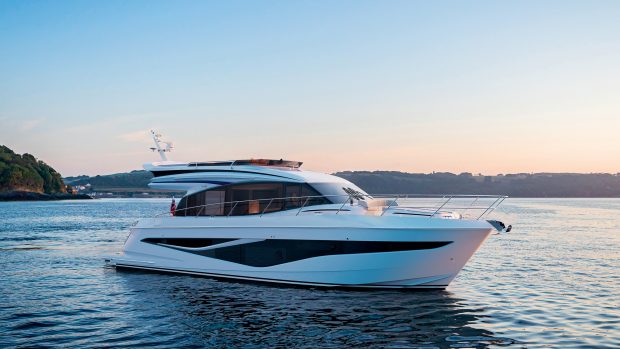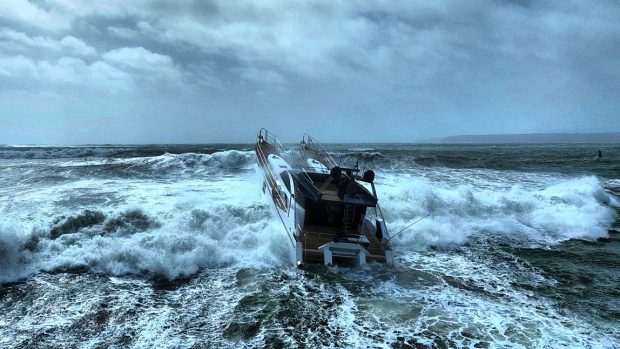Read an account of an amazing US coastguard rescue in horrendous seas in the Bering Sea.
US coastguard Gregory Gibbons was awarded the Association for Rescue at Sea’s gold medal in their prestigious annual awards, after this death-defying rescue in the Bering Sea.
Here is the official account of the rescue:
“Gold Medal awardee Gregory Gibbons who is stationed at Coast Guard Station Kodiak was serving with a helicopter Aviation Detachment with USCG HH-65B NR 6513 aboard the USCG Cutter Alex Haley.
The cutter along with two USCG HH-60J helicopters had been working to rescue the crew of the M/V Seledang Ayu, a 738-foot freighter hopelessly adrift in very heavy weather in the Bering Sea.
Already the two other helos had rescued 18 of the 26 persons on board, but as they departed the scene to refuel, the master reported the ship was aground, taking on water rapidly and all were in extreme peril of drowning.
Conditions were such that there needed to be an immediate evacuation of the remaining persons on board. The aviation detachment aboard the Alex Haley were the only remaining rescue assets, but 25-30 foot seas and wind gusts as high 45 knots made launch of a helicopter from the deck of the cutter highly problematical.
Nevertheless, the pilot and aviation detachment decided to risk a launch since others were in such peril aboard the freighter. During the Alex Haley helo’s transit to the scene, HH-60J NR 6020 returned from refuelling. It was decided that because it could take eight survivors at once, NR 6020 would proceed with the rescue and NR 6513 would stand by to assist as necessary.
But after rescuing the first seven survivors, suddenly and without warning, a gigantic wave hit the bow of the Selendang Ayu, sending a huge wall of water into the air. NR 6020 was engulfed in the water and went crashing into the sea as the crew of CGNR 6513 watched in horror.
The standby helo NR 6513 from the cutter Alex Haley rapidly reacted with AMT3 Gibbons rigging the rescue basket for hoisting while the pilot LT Tim Eason moved the helicopter into position for the rescue from a 150 foot hover to avoid additional waves. Throughout the rescue operation, AMT3 Gibbons told the pilot precisely where he wanted the helo positioned and thus was able to position the rescue basket so accurately that they were able to put it within arm’s length of the survivors, including a severely hypothermic, unresponsive member of the ship’s crew.
All of the observable persons, including the pilot, co-pilot and flight mechanic of the CGNR 6020, were safely hoisted aboard, but the ship’s master and the rescue swimmer from GCNR 6020 were still on the ship and six other members of ship’s crew could not be located. (Note that NR 6513 did not carry a rescue swimmer, so the rescue basket was the only hoist means available and AMT3 Gibbons played a critical role in this whole operation).
After breaking off to refuel at Dutch Harbour, CGNR 6513 managed to return through mountainous terrain and very heavy weather to find the ship now broken in two, covered in heavy fuel oil, and the master and the USCG rescue swimmer remaining on the unlit, powerless bow section.
Hoisting at 200 feet through heavy snow that sometimes reduced visibility to zero, the crew of NR 6513 persisted and eventually retrieved both the master and the swimmer. With both survivors in good health, the crew continued to search for additional survivors until low fuel dictated they depart the scene.
Thanks to AMT3 Gibbons’ skilful and courageous performance as a flight mechanic along with the rest of the crew on CGNR 6513, 6 lives were saved, including the four from the downed CGNR 6020, in conditions so marginal that it was a miracle they were even able to fly.”









